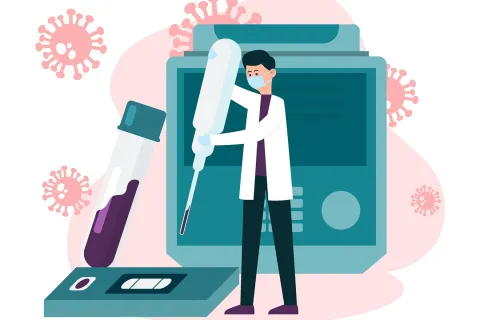In the life sciences industry, precision and accuracy are paramount. Every detail, from clinical data to product labeling, plays a crucial role in ensuring patient safety. Among these details, the artwork associated with pharmaceutical products—encompassing labels, packaging, and informational leaflets—holds significant importance. Errors in artwork can lead to prescribing mistakes, which in turn can cause patient harm. This blog explores the potential consequences of artwork errors and underscores the need for rigorous artwork management in the healthcare sector.
The Critical Role of Artwork in Pharmaceuticals
Artwork in the pharmaceutical industry is not just about aesthetics; it involves the precise and accurate presentation of essential information. This includes:
- Dosage Instructions: Clear instructions on how much and how often a medication should be taken.
- Contraindications and Warnings: Information about who should not take the medication and potential risks.
- Ingredients: A complete list of active and inactive ingredients to prevent allergic reactions.
- Storage Instructions: Guidelines on how to store the medication to maintain its efficacy.
Given the critical nature of this information, any error in the artwork can have serious consequences.
The Consequences of Artwork Errors
- Patient Harm Due to Incorrect Dosage
- Example: A misplaced decimal point in dosage instructions can lead to an overdose or underdose, resulting in adverse health effects.
- Impact: Overdose can cause severe toxicity, while underdose can render the treatment ineffective, both potentially leading to hospitalizations or fatalities.
- Adverse Reactions from Missing Allergen Information
- Example: An omitted allergen warning on a medication label can lead to severe allergic reactions in sensitive patients.
- Impact: Allergic reactions can range from mild symptoms like rashes to life-threatening conditions such as anaphylaxis.
- Misinterpretation of Instructions
- Example: Ambiguous or poorly translated instructions can confuse patients, leading to incorrect administration of the medication.
- Impact: Misinterpretation can result in improper use of the medication, reducing its effectiveness and potentially causing harm.
- Non-Compliance with Regulatory Standards
- Example: Artwork that fails to meet regulatory guidelines can lead to product recalls and delays in market approval.
- Impact: Recalls disrupt the supply chain, affect the company’s reputation, and incur significant financial losses.
Real-Life Examples
- High-Profile Recall Due to Labeling Errors
- Case: A major pharmaceutical company had to recall a batch of a widely used medication due to incorrect labeling that misstated the dosage.
- Outcome: This resulted in significant financial losses and damaged the company's reputation.
- Patient Harm from Packaging Errors
- Case: A packaging error led to the inclusion of incorrect dosing information, causing several patients to be hospitalized due to overdosing.
- Outcome: The company faced legal action and had to implement stringent artwork review processes to prevent future incidents.
Preventing Artwork Errors
To mitigate the risks associated with artwork errors, pharmaceutical companies must implement robust artwork management systems. Here’s how:
- Centralized Artwork Management
- Utilize a centralized platform to manage all artwork files, ensuring consistency and version control.
- Implement automated workflows to streamline the approval process and reduce the risk of human error.
- Real-Time Collaboration
- Foster real-time collaboration among all stakeholders, including regulatory affairs, marketing, and design teams.
- Use digital tools that allow simultaneous review and feedback to expedite the approval process.
- Regulatory Compliance Checks
- Integrate compliance checks into the artwork management system to ensure all regulatory requirements are met.
- Regularly update the system with the latest regulatory guidelines to avoid non-compliance.
- Quality Control Measures
- Conduct multiple rounds of proofreading and validation to catch errors early.
- Use automated tools to check for formatting inconsistencies and missing information.
Conclusion
In the pharmaceutical industry, the stakes are incredibly high. Artwork errors can lead to prescribing mistakes, putting patients at serious risk. By implementing advanced artwork management systems and fostering a culture of accuracy and compliance, companies can minimize these risks. At Freyr, we specialize in providing regulatory services that help life sciences companies streamline their artwork management processes, ensuring patient safety and regulatory compliance. Contact us today to learn how we can support your artwork management needs.
Author: Nirupama Parate










